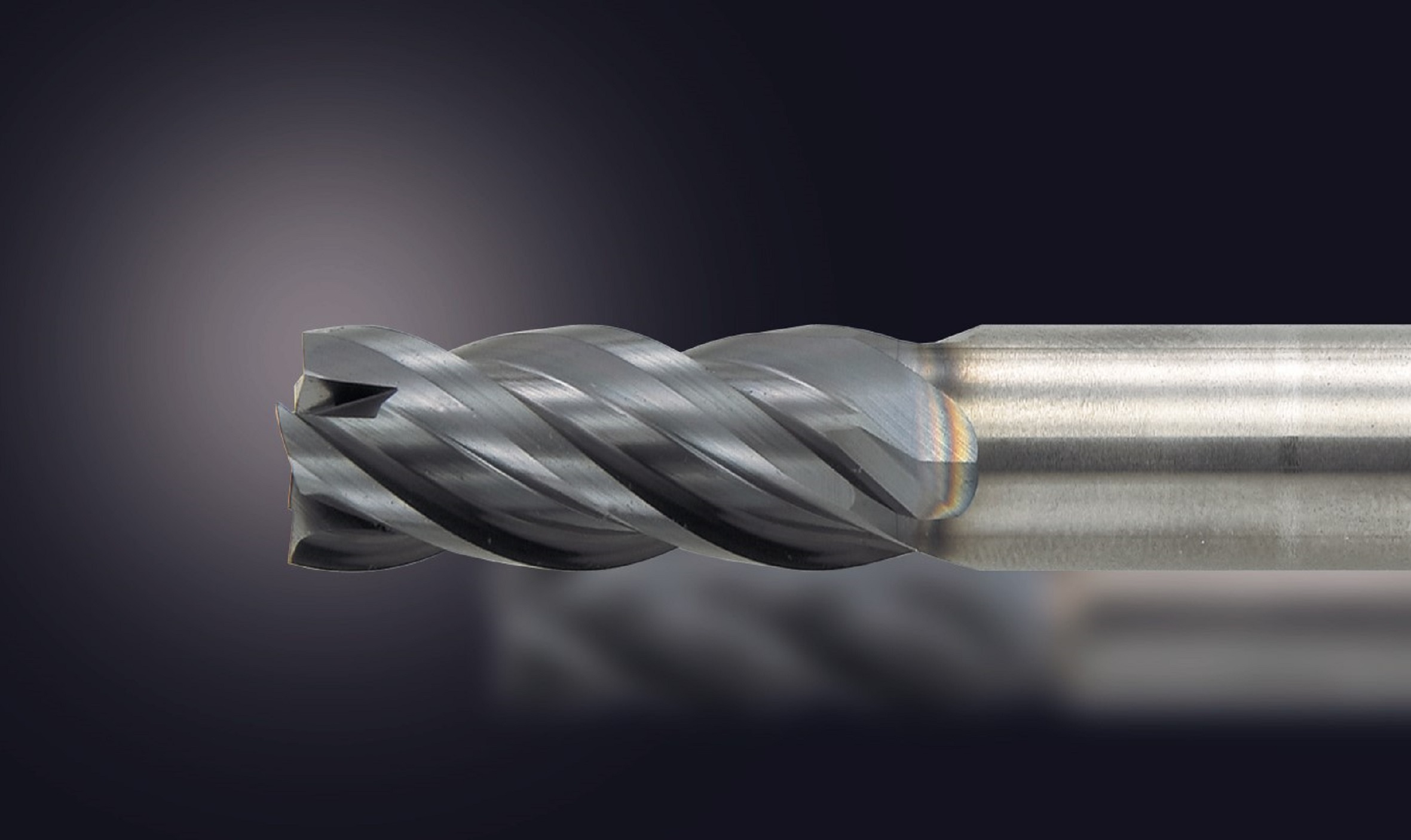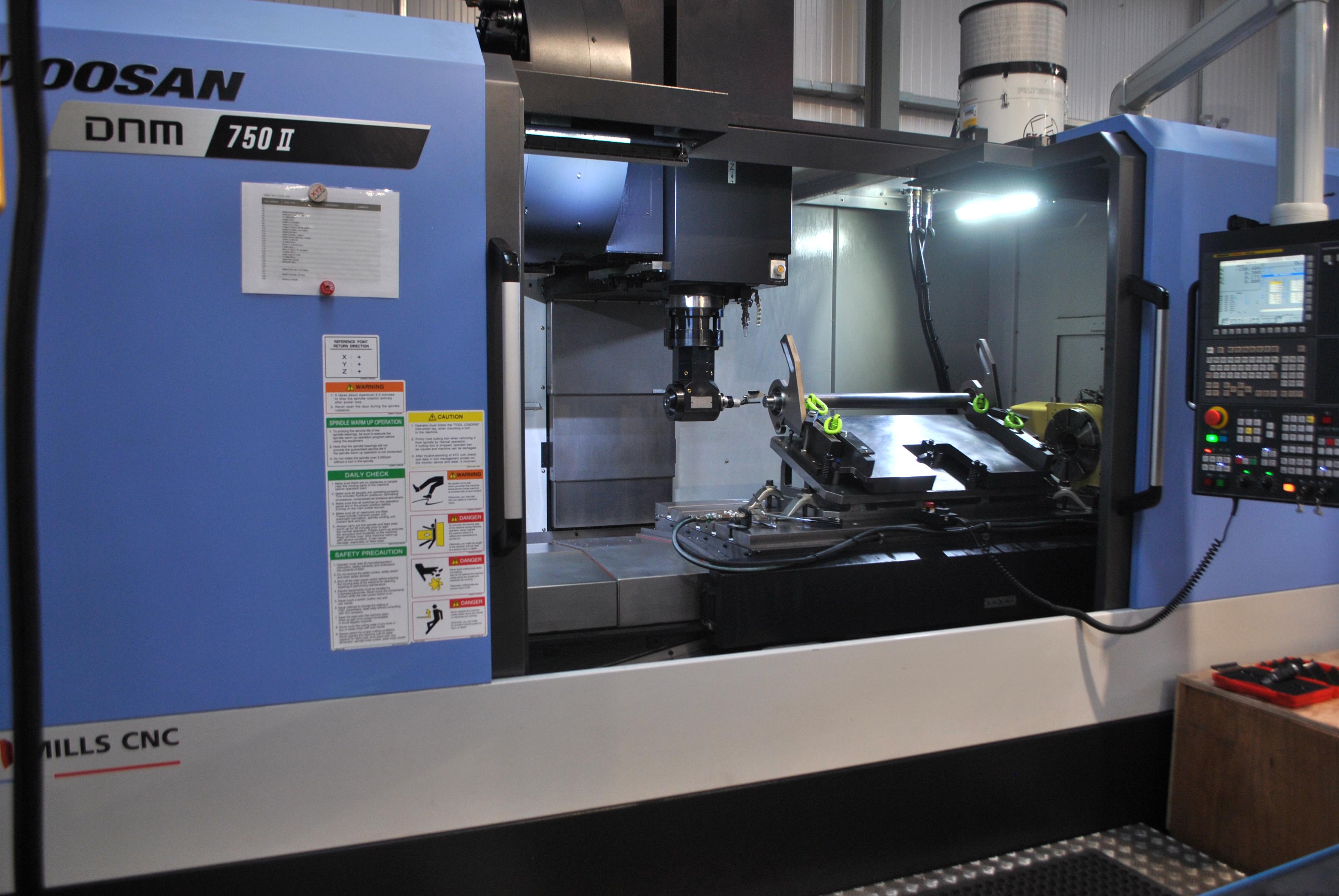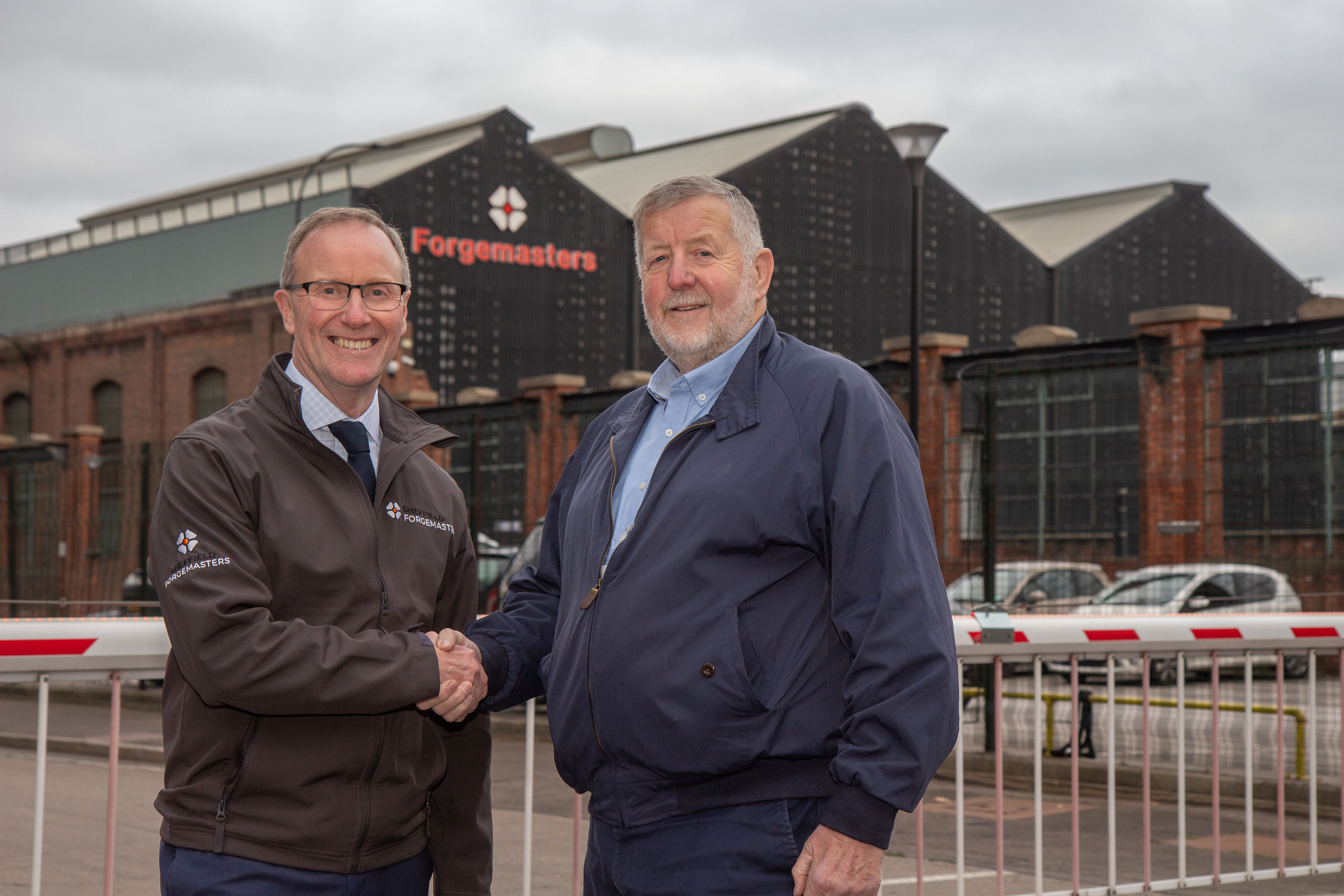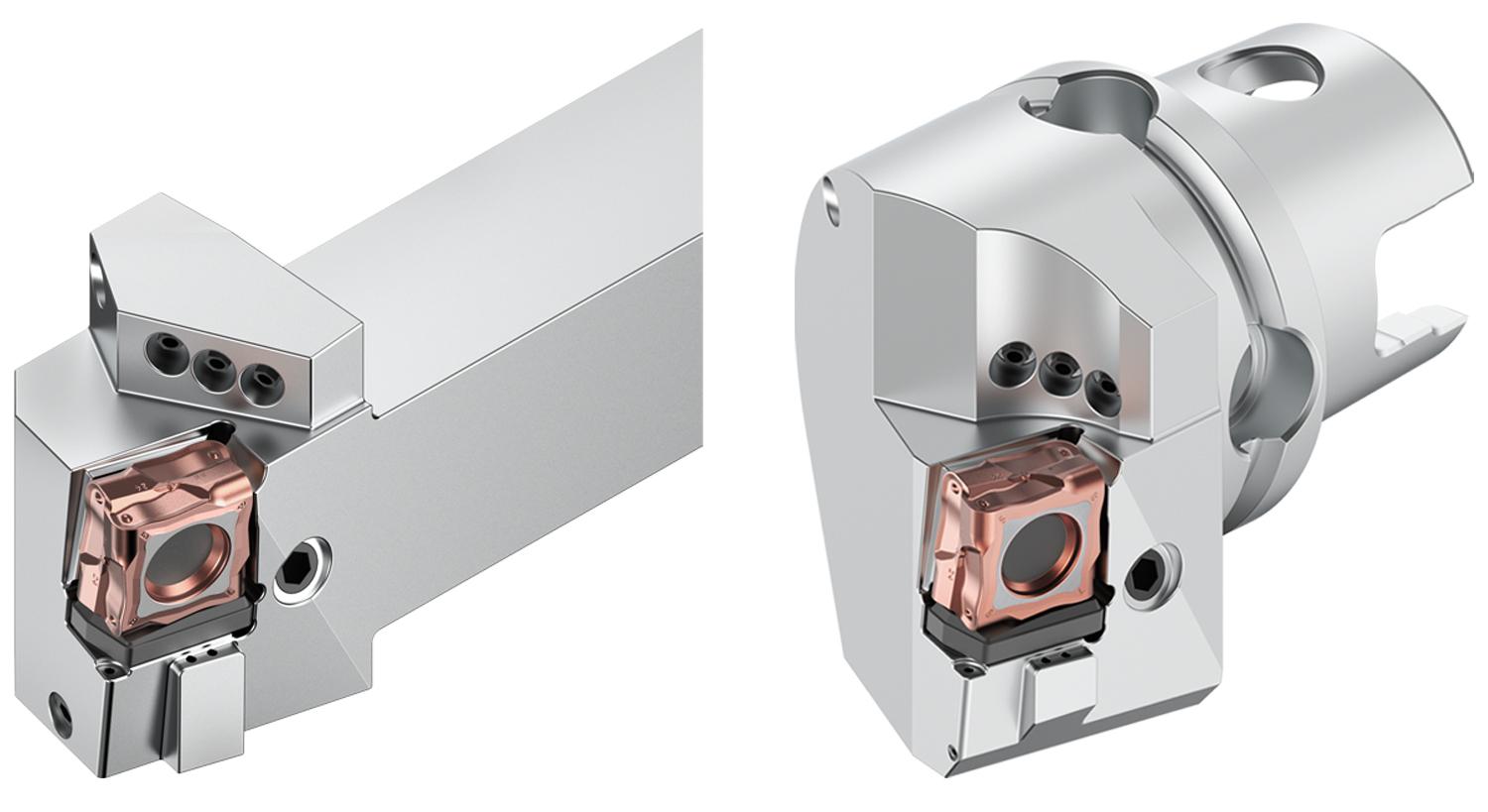
Mills CNC, the exclusive distributor of Doosan machine tools in the UK and Ireland, has recently supplied Peterborough-based PJ Innovations Ltd, a leading bakery equipment manufacturing specialist, with three new vertical machining centres and a new multi-tasking lathe.
The four machines, now installed at the company’s 7500 sq ft facility in Market Deeping, comprise a large-capacity DNM 750 II machining centre, a Puma GT 3100LM lathe equipped with a C axis and driven tooling capabilities (both delivered to the company in March 2019 as part of a turnkey solution) and two DNM 6700 machining centres that were acquired in October 2020 and June 2021 respectively.
The four machines provide PJ Innovations with state-of-the-art machining capabilities and are the centrepiece of the machine shop facility that was established in 2019 with the primary purpose of enabling the company to machine a range of specific parts for its heavy-duty Dough Divider Rounder machines.
Explains Peter Jackson, PJ Innovations’ owner and managing director: “PJ Innovations was established in 2014. In the early days we focused our efforts and resources on the design and assembly of our Dough Divider Rounder machines; as a consequence, we outsourced all of our machining requirements to a number of precision engineering specialists.”

While this arrangement proved satisfactory in the short term, it did create some issues, primarily concerning quality, lead-time fulfilment and costs.
“As demand for our Dough Divider Rounders increased, not just throughout the UK but in Europe and the US, we made the strategic business decision to exercise more control over all our manufacturing processes,” says Jackson. “To ensure the ready availability of high-quality machined components for new Divider Rounder machines, and to satisfy the demands for running a responsive and ‘best-in-class’ customer spares and replacement parts operation, we decided to lessen our reliance on outsourcing and create our own in-house machine shop to meet future machining demands and requirements.”
However, as there are hundreds of machined parts in every Dough Divider Rounder, the company first identified and prioritised specific parts to machine. These parts had a number of things in common: similar size dimensions; high accuracy and exacting surface finish requirements; complex profiles and features; long set up and cycle times; and high value.

Identifying the range of parts to machine in-house was one thing. Acquiring the appropriate machine tool technologies and creating the production processes to machine them was quite another.
Remembers Nick Lormor, PJ Innovations’ general manager: “It was a steep learning curve because not only did we have to identify, and then invest in, the right machine tools, we also needed to design and develop robust and reliable processes to get the most from the machines and manufacture precision components efficiently and cost-competitively. It became evident, quite quickly, that we needed a turnkey solution and that we also needed to identify a proven partner who could help us design and implement one.”
To look at the latest and most advanced machine tool technologies on the market and help identify a suitable turnkey partner, the company attended the MACH 2018 exhibition in Birmingham. It was here that the relationship with Mills CNC began.

Says Lormor: “We approached a number of companies at the event. Not all provided turnkey/process improvement solutions but, from those that did, we preferred the proactive approach adopted by Mills CNC. We also liked the look of Doosan machine tools and, as such, we arranged to meet after MACH to discuss our requirements in more detail and to scope out the project.”
In 2019, a large-capacity, Fanuc-controlled Doosan DNM 750 II vertical machining centre equipped with a 8000 rpm high-torque BT40 spindle and a Nikken 260 rotary table with a TAT support unit was installed in PJ Innovations’ machine shop facility. Also arriving was a 12”-chuck Doosan Puma GT 3100LM multi-tasking lathe equipped with a 2800 rpm spindle, a C axis, driven tooling capability and a hydraulic steady rest.
Both machines were delivered as part of a turnkey solution designed and developed by Mills CNC’s pre-sales application engineers over a number of months in conjunction with production staff from PJ Innovations.

“We use the two Doosans to machine performance-critical core parts of our Divider Rounder machines – namely base plates [part of the top box assembly] on the DNM 750 II, and long shaft/cylindrical part segments [part of the rotating head assembly] on the Puma GT 3100LM,” explains Lormor.
The base plates and segments can vary in size and specification, according to customer requirements, but all are made from cast iron or 316 stainless steel and involve high metal removal rates achieved though high-accuracy roughing operations. These precision parts are machined to tight to tolerances, typically to a couple of thousandths of an inch.
Says Lormor: “Key elements and features in the machining processes, developed with Mills CNC, involved innovative work holding and the use of non-conventional tooling such as bespoke angled-head cutters. Mills’ knowledge and expertise has been invaluable in helping design a robust, reliable and repeatable machining process for these parts.”
The success of the first turnkey project saw the company increase its headcount and invest in two more Doosan machines in 2020 and 2021 respectively. These two new machines, both Fanuc-controlled DNM 6700 vertical machining centres with 12,000 rpm spindles and 30 position ATCs, are being used to machine different Dough Divider Rounder parts, such as hoppers.
Says Jackson: “Creating the machine shop has been a successful venture and we are looking to increase its capacity and capabilities still further in the future so that we can machine more parts in house. Watch this space.”
PJ Innovations has created an impressive, high-productivity machine shop from a standing start. To enable it to quickly exploit the new machine tool technologies, the company took advantage of the training courses provided by the CNC Training Academy – Mills CNC’s independently operated training division.
For further information
www.millscnc.co.uk




























